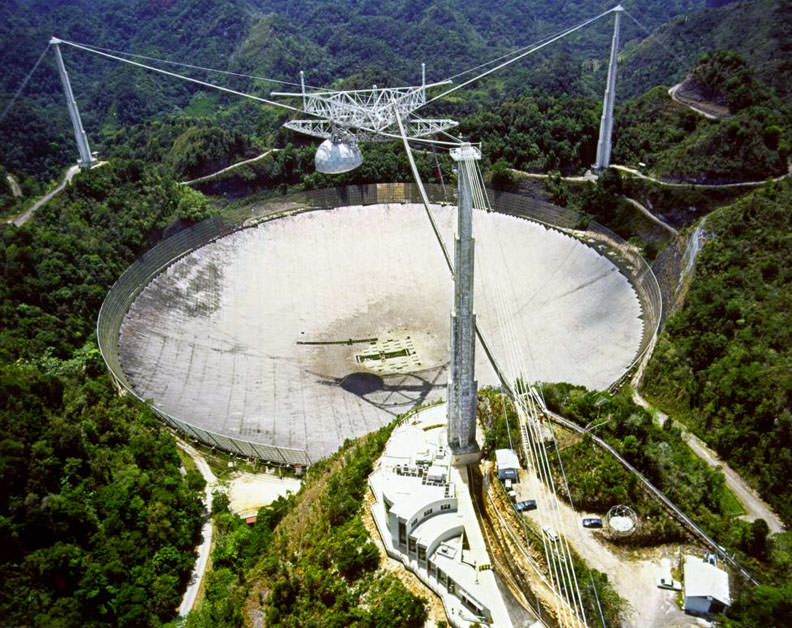Another main cable that supports the Arecibo Observatory broke last week, falling onto the reflector dish and causing more damage. This is the second time a cable has snapped on the iconic radio observatory in just three months.
The new damage is an unfortunate and devastating setback for the observatory, just as repairs from the first accident were about to begin.
“This is certainly not what we wanted to see, but the important thing is that no one got hurt,” said Francisco Cordova, the director of the observatory, in a press release. “We have been thoughtful in our evaluation and prioritized safety in planning for repairs that were supposed to begin Tuesday [November 9, 2020]. Now this. There is much uncertainty until we can stabilize the structure. We are evaluating the situation with our experts and hope to have more to share soon.”

According to the University of Central Florida (UCF) – which manages the facility– unlike the auxiliary cable that failed in August, the second main cable did not slip out of its socket. Instead, it broke and fell onto the reflector dish below, causing additional damage to the dish and other nearby cables. Both cables were connected to the same support tower. Since the second cable break, engineers have been assessing all the damage, trying to determine the best way to stabilize the structure.
There is a funding request pending with the National Science Foundation (NSF) for temporary repairs related to the original break. However, there is no cost estimate for the new repairs that will be needed at this time.
Officials said a safety zone has been set up around the dish and only personnel responding to the incident are allowed onsite.

The Arecibo Observatory was completed in 1963 and for over 50 years was the world’s largest single-aperture telescope, at 1,000 ft (305 m) across. It is used in three major areas of research: radio astronomy, atmospheric science, and radar astronomy. The observatory has appeared in movies, television shows and more, and is listed on the US National Register of Historic Places.
The facility has contributed to significant breakthroughs in astronomy and cosmology, including the discovery of the first binary pulsar, the first-millisecond pulsar, the first exoplanets, along with helping to study asteroids and planets in the Solar System.
In addition, the facility has also played an important role in the Search for Extraterrestrial Intelligence (SETI), providing the source data for SETI@home ad the SETI Institute’s Project Phoenix,
As to why a second cable broke, engineers suspect it is related to the extra load the remaining cables have been carrying since the August accident. UCF said a monitoring team has been closely watching all the cables and platform since then as part of the facility’s safety and temporary emergency repair plan. Observers had noted and were tracking broken wires on the main cable that failed last week. Besides visual inspections, drones and cameras are also being used to continue to monitor the structure.
Puerto Rico experiences frequent earthquakes but UCF has not indicated tremors or quakes are to blame for any of the damage.
UCF said the engineering repair team hopes to be able to reduce the tension in the existing cables at the tower and install steel reinforcements to temporarily alleviate some of the additional load that is being distributed among the remaining cables. Experts are being mobilized to do the work as quickly as possible. The team will attempt to expedite the arrival of two new cables that were already on order. That’s the current plan pending further evaluation, which will be taking place over the next few days.
“We remain committed to getting the facility back online,” Cordova said. “It’s just too important of a tool for the advancement of science.”
Source: University of Central Florida

